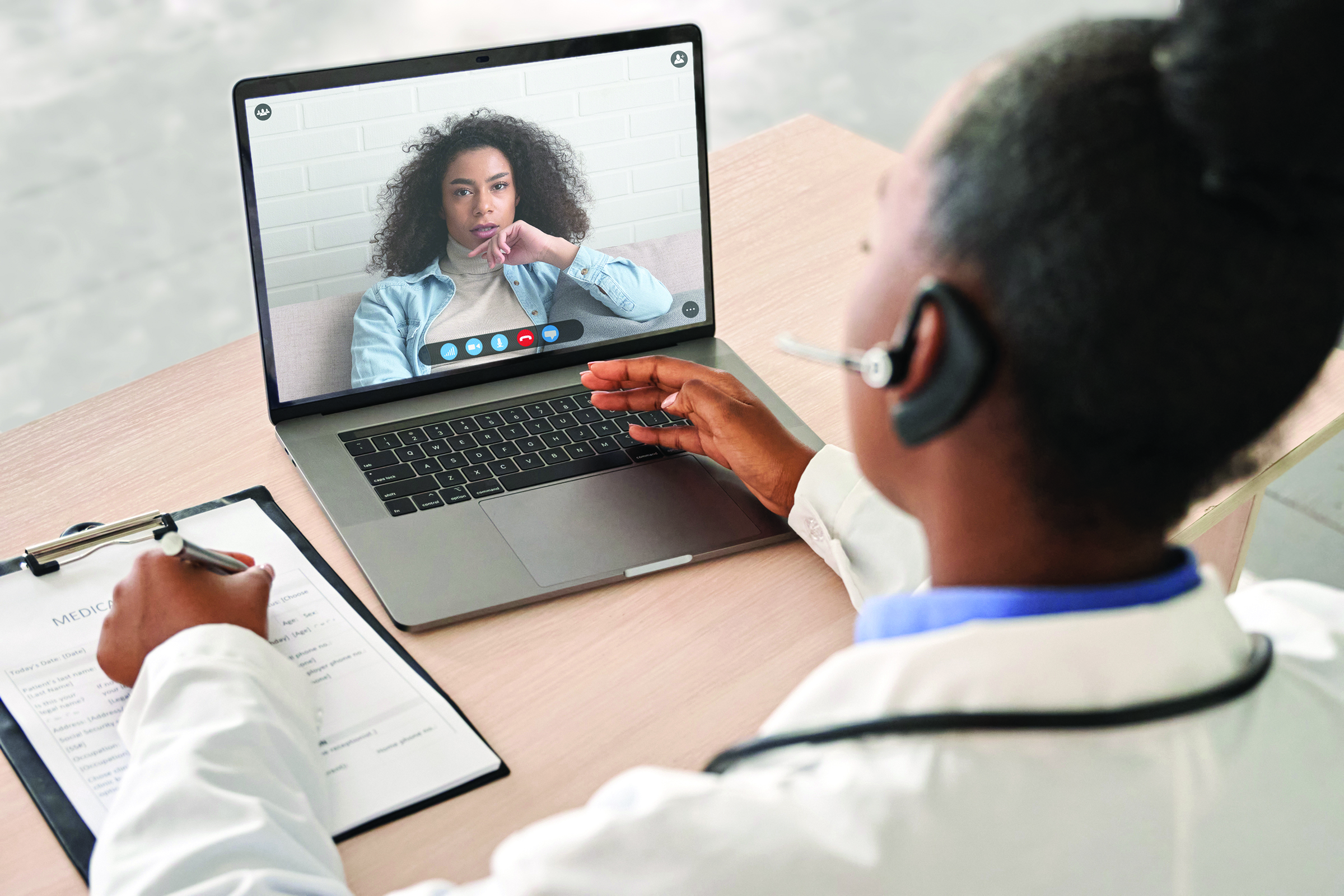Remote education is an effective teaching tool.
Takeaways:
- Tele-education can serve as an alternative to in-person subcutaneous injection training for patients and families.
- Patients and families found tele-education (via online training supplemented by written materials and interactive self-learning modules) to be convenient and user friendly.
- Implementing this kind of program requires collaboration between educators and information technology specialists to develop a user-friendly experience that enables return demonstration and skills assessment.
As more patients and families initiate therapies in outpatient settings, meeting their education needs can be challenging. Children’s Hospital of Philadelphia (CHOP) is a Magnet®-recognized, quaternary-care organization providing services in inpatient, outpatient, and primary care settings. At the hospital’s Family Learning Center (FLC), our team of nurse educators provides education and training support for thousands of patients and families every year.
Over the past few years, we realized that some of our in-hospital courses required revision to provide an optimal learning experience. For example, many patients and families requiring outpatient subcutaneous injection training had asked whether training was available at home or at locations outside of the city. In 2018, we applied for and received a hospital innovation grant to pursue potential solutions, including a novel tele-education alternative to in-person training. The lessons learned from our project, especially during the COVID-19 pandemic, can serve as a model for other organizations seeking to sustain and enhance education services to families by literally meeting them where they are.
Understanding need
We began our intervention by seeking to understand the level of need. In a preliminary survey, 41% of our outpatient families indicated they would prefer to receive subcutaneous injection education via live video conferencing; 93% of that group reported they would have been able to start their child’s medication sooner if virtual education were an option.
Approaching these findings through the lens of design thinking (an iterative process for creative problem-solving that emphasizes understanding the people for whom you’re developing a solution), we tried to view the problem from the patients’ and families’ perspectives. Families reported many barriers—such as travel times (frequently by public transit), scheduling conflicts, childcare, and parking costs—to attending in-person classes at the hospital. A literature review indicated significant support for virtual and online patient education, as well as a track record of success.
Before implementing a tele-education intervention, we had to address several challenges, including lack of an existing infrastructure for delivering virtual education, while still enabling a clear return on demonstration of learned skills.
Training educators
The digital health team helped FLC identify a previously vetted Health Insurance Portability and Accountability Act–compliant video platform. From January to May 2019, FLC nurse educators were trained to use the platform. Each educator received as much training and simulation as needed to feel confident conducting tele-education sessions; the average was about 4 hours per educator.
As training progressed, the team worked to modify the in-person class curriculum. We serve a diverse population with a wide range of educational backgrounds, so we design our written education materials to be understood by the average high school student. We supplement that with more advanced family-specific information as needed. As we revised the content for remote delivery, we paid special attention to measures that would allow educators and learners to visualize medication doses and injection technique virtually. Proper dose and technique visualization is paramount for safety, so we used simulations to verify each educator’s proficiency in clearly assessing accuracy during training.
Identifying patients
We partnered with clinical colleagues from the hospital’s GI and dermatology divisions to identify outpatients receiving adalimumab injections as the most appropriate group for evaluating the program’s initial launch. Eligibility criteria for the project included English as the primary language and access to internet, email, and a smartphone or tablet with a working camera and microphone. To schedule the tele-education class, the family had to have already received the medication from the pharmacy. Patients who required extra emotional or behavioral support to cope with the anxiety of subcutaneous injections weren’t eligible.
Clinical colleagues also helped us identify basic project assessment measures. Because we wanted to establish the feasibility and acceptability of tele-education, we opted for measures related not only to skills learning by patients and their families, but also to their experience. Patient- and family-focused outcome measures included the learner’s ability to administer the injection safely and appropriately to the patient and their level of satisfaction with the tele-education process. We also tracked nurse educators’ satisfaction.
Marketing the program
To inform families about the availability of our new tele-education option, the team developed a marketing plan targeting both providers and patient/family learners. We regularly emailed reminders about the program to the ordering providers and their teams and distributed informational flyers to eligible patients at clinic visits. For all participating provider teams, we developed marketing “smart phrases” (abbreviated phrases that automatically populate pre-scripted notes and comments into post-clinic visit summaries given to patients).
During the first 9 months of the program, a tele-education option was presented to any outpatient family calling to schedule an in-person subcutaneous injection class. Families who didn’t meet eligibility criteria or who indicated a preference for the in-person format were still able to attend classes at our main building.
Communicating with patients and families
Communication with patients and families was critical to the success of each tele-education session. After families were scheduled for a session, they received an email with instructions and pre-training materials, including steps for logging on, a troubleshooting guide, and a list of supplies. Our instructional designer created a web-based learning module on subcutaneous injections, which was shared via email before the session. The module, which provides step-by-step procedures for administering an injection, was designed to actively engage learners with interactive prompts. Links to demonstration videos from pharmaceutical companies also were included for recommended viewing.
Overcoming challenges
The first few weeks were a learning experience for everyone. Email communication proved challenging in the early stages, and we needed to supplement with phone calls to help families log into the session. The team modified communication over time to simplify the directions, which helped reduce the need for real-time phone guidance for logging in. However, we found that the nuances of the video platform, including multiple steps for joining the session, weren’t initially intuitive for some learners. To solve this problem, we edited our email templates to simplify instructions and make them family-friendly. We also provided one-on-one coaching for families who were less confident with technology.
Evaluating the program
In June 2019, the program went live with adalimumab injection tele-education. The first 9 months of the program brought early success, with 100% of learners safely and correctly administering the injection to the patient, as evaluated by the nurse educator completing the training assessments. Patients, families, and nurse educators reported high levels of satisfaction with the virtual education.
As of February 24, 2021, 261 families have participated in the tele-education program over 22 months. All but one family (which wasn’t able to administer the injection because of the patient’s fear of needles) safely and effectively administered the injection. We made alternative plans for the family that wasn’t able to complete the course.
Learner/educator feedback
At the end of each session, learners were encouraged to complete a feedback survey. The survey yielded a 46% response rate over 18 months. Among respondents, 97% strongly agreed with the statement, “I was satisfied with this tele-education class.” The other 3% agreed with the statement, and none disagreed. All respondents indicated that the tele-education session prepared them to safely give their child the injection, and 100% said they would recommend tele-education to other families.
In 19% of the sessions, learners experienced technical difficulties, including connectivity, video, audio, and application launch issues. In each case, appropriate troubleshooting helped the learner complete the session so they could successfully administer the injection. Despite technology challenges, 92% of learners responded that they strongly agreed with the statement, “I was comfortable using technology to participate in this tele-education session.” The remaining 8% agreed.
In 3% of the sessions, nurse educators reported experiencing technical challenges, including connectivity and device issues and temporary video application downtime. After troubleshooting, all educators successfully taught their classes. All of the nurse educators reported feeling comfortable or extremely comfortable with the technology and agreed with the statement, “I was satisfied with this tele-education session.” As anticipated, the nurse educators’ comfort with technology and satisfaction with the tele-education classes improved with time and experience.
Exceeding expectations
As more patients initiate therapies in the outpatient setting, a comprehensive approach to education is critical. Our experience developing and implementing tele-education classes has shown them to be feasible; acceptable to patients, families, and nurse educators; and just as effective as in-person sessions for teaching subcutaneous injection techniques. In addition, the approach has helped us provide education to even more patients during the pandemic. (See Adapting to the pandemic.)
Adapting to the pandemic
The work involved in developing a tele-education program has allowed us to transition efficiently and seamlessly to meet the needs of even more patients and families during the COVID-19 pandemic. To address social distancing requirements, we quickly pivoted all outpatient injection classes to tele-education, making it the standard of care. We adjusted some of the exclusion criteria and made format changes to allow for interpreters so learners with limited English proficiency could participate. To support patients with injection anxiety, we elicited assistance from child life specialists, who provided phone consultations and joined classes with families to develop coping plans specific to patient concerns.
At the request of CHOP clinical teams, the FLC expanded the program to include injection training for additional medications, such as dupilumab and testosterone, and we’re exploring virtual learning experiences for additional classes. When we began to investigate tele-education, we set a modest goal of providing the service to one patient population. Stakeholder partnerships and a commitment to understanding patient and family needs were key to supporting the program’s rapid expansion during a challenging time in healthcare. The program’s success has exceeded our expectations. AN
Access references at myamericannurse.com/?p=74387.
The authors work at Children’s Hospital of Philadelphia in Philadelphia, Pennsylvania. Linda Bevington is a patient and family nurse educator, Linda Kocent is manager of patient and family education, and Jeneane Sullivan Miller is a patient and family education specialist. The authors would like to acknowledge Shira Birnbaum, PhD, RN, for her editing assistance.
References
Ha Dinh TT, Bonner A, Clark R, Ramsbotham J, Hines S. The effectiveness of the teach-back method on adherence and self-management in health education for people with chronic disease: A systematic review. JBI Database System Rev Implement Rep. 2016;14(1):210-47. doi:10.11124/jbisrir-2016-2296
Interactive Design Foundation. 5 stages in the design thinking process. interaction-design.org/literature/article/5-stages-in-the-design-thinking-process
Nuckols TK, Fingar KR, Barrett M, Steiner CA, Stocks C, Owens PL. The shifting landscape in utilization of inpatient, observation, and emergency department services across payers. J Hosp Med. 2017;12(6):443-6. doi:10.12788/jhm.2751
Rush KL, Hatt L, Janke R, Burton L, Ferrier M, Tetrault M. The efficacy of telehealth delivered educational approaches for patients with chronic diseases: A systematic review. Patient Educ Couns. 2018;101(8):1310-21. doi:10.1016/j.pec.2018.02.006



















2 Comments. Leave new
nice
Thanks so much for this article! As a student, I can say that online education has its pros and cons. The thing I like is that I can do more things while at home and plan my time more efficiently. On the other hand, it is hard sometimes to organize yourself and divide your study, work, and personal life. The big plus is that we can learn from any part of the world. I think the tele-education program is a great new approach that broadens the audience. I like distance learning as I can plan my time, work, and travel. I work as a freelance writer at https://samplius.com/ website, where I also help students. It is great that nowadays we can communicate through time and distance 🙂 Good for you! Good tele-education initiative!